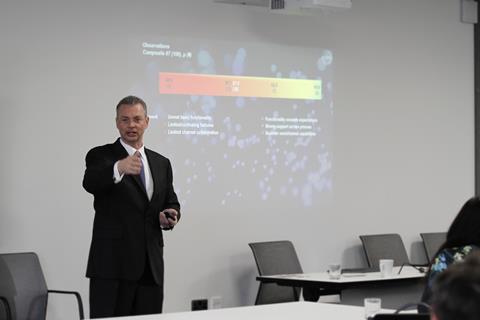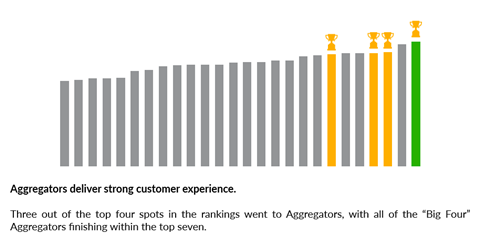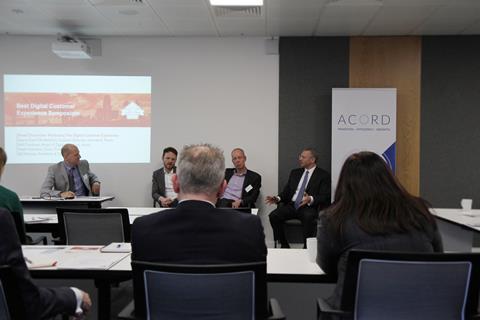ACORD chief executive and president Bill Pieroni had a stark warning for insurers at the inaugural Best Digital Customer Experience Symposium in London

Credit: Kate Ramirez (facebook.com/sugarfreephotographyUK)
Aggregators are coming out on top when it comes to the digital customer experience, and insurers and brokers need to up their game, ACORD president and chief executive Bill Pieroni (pictured) has warned.
Pieroni spoke to Insurance Times at ACORD’s inaugural Best Digital Customer Experience Symposium in London.
The standards group has conducted insightful new research into UK consumers’ experiences of buying insurance online, and the results are damning for the UK insurance industry, according to its chief executive.
Thirteen insurer websites, nine broker websites and four aggregators were evaulated, through multiple surveys that generated over 10,000 impressions.
Three of the four top ranked sites for customer experience were aggregators, while the ‘big four’ aggregators all ranked in the top seven (see image below).

Credit: ACORD (https://www.acord.org)
Having a compelling digital proposition is vital, Pieroni explained. He emphasised that 80% of UK motor insurance consumers will engage in online research before making a purchase, while 45% will make the final purchase online.
However, 70% of consumers find it difficult to shop for motor insurance online.
“We aren’t meeting their expectations,” said Pieroni. “We aren’t even setting the expectations.”
He added that ACORD has conducted this research worldwide for 20 years, but this was the first time they had seen aggregators displacing insurers at the top of the pile.
There is a “really troubling dynamic”, Pieroni stressed, as 90% of UK consumers have aggregator brand awareness, compared to 35% with the same level of awareness of insurers.
In addition, Pieroni said he was shocked that while sites ranked highly for engagement, they were less good at enabling. In cases, survey-takers were so frustrated by the process that they were unable to get a quote.
A ‘true threat’

Credit: Kate Ramirez (facebook.com/sugarfreephotographyUK)
“I think that the aggregators are a true threat versus individual players in the insurtech space,” Pieroni explained. “The aggregators have the resources, the focus, and the existing platforms to refine and optimise over time.”
Pieroni suggests insurers should look to Malcolm Gladwell’s rule that you must practice something for 10,000 hours to become elite in your field, to understand why aggregators are a danger to incumbents.
“The more you do something the better you become,” Pieroni explained. “Whether it’s golf and you’re Tiger Woods, or it’s a cello and you’re Yo-Yo Ma. Say we decide we want to play golf, we would never catch up with Tiger Woods, because if we did 10,000 hours he would have 20,000 hours. I worry about the accumulated knowledge, the learning by doing that goes on.”
He continued: “I don’t worry about a new entrant. I worry more about the ones who have been optimising and working on a rich customer experience. Can I catch up to them? How do I do it?”
Talent, Pieroni said, is a critical factor in building a successful customer-centric digital experience. An insurer will want the right team behind them to succeed, but he worried that aggregators were already winning and had the teams behind them to continue doing so if insurers don’t work to attract the right people.
A packed event
ACORD’s latest research findings were presented to a packed room of attendees at the symposium.

Credit: Kate Ramirez (facebook.com/sugarfreephotographyUK)
In addition to Pieroni’s aggregator-domination revelations, highlights included presentations from RDT chief executive Mark Bates on insurance app Trice, and CGI vice president Paul Wishman on emerging technologies that included a demonstration of robot Bobby Watson
Insurance Times content director Saxon East also chaired an energetic panel discussing the digital customer experience in which Pieroni, TribeCX chair Mark Harrison and Aviva’s digital product head Will Faulkner had an indepth discussion that included question set complications, attracting talent and building customer loyalty.






































No comments yet